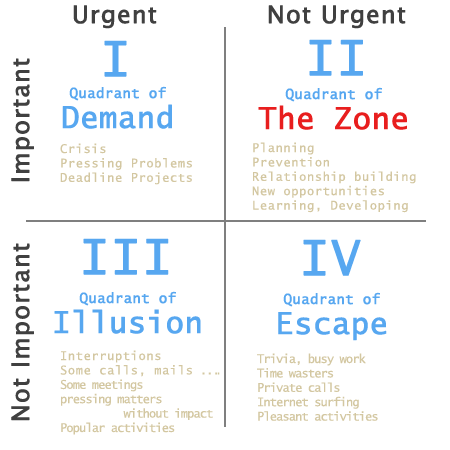I found the following on the photocopier (after a few days, I assume its orphaned). Sourced from a SurveyMonkey print-out, it’s part of a “BYU Chair Study” which through context I assume is polling what training resources the owner of this printout requires.
These are attributes of Respected Chairs. The context is a faculty member within an academic institution, but it’s pretty easy to convert to other contexts. As always, the gems beneath the headings (for example, anything that recognizes the time and place for procrastination has my vote).
Be healthy and well-balanced (take care of yourself and your other life): Family, friends, community, religion, teaching & research, health and emotional needs
Be competent: Key leadership skills, preparation, participation, people, issues, professional & national trends
Be collegial: Balanec of sociable and formal, work and personal, internal and external to department
Be effective at managing time: balance important vs. urgent; delegate, optimize secretary/staff/comittees, prioritize
Be proactive: Identify and implement personal program/goals, be responsible, change self - not others
Be aware of the power of your position and use it effectively: Understand sources, extent, and limitations of chair power/influence; exercise skillfully
Be effective in making decisions: Emergencies, mistakes, red flags, stakeholders, when to procrastinate; maximize or satisfy
Be credible: Authentic, believable, inspiring, reliable, sensible, appropriately transparent
Be humble: influence & success through humility, level 5 leadership, egonomics, servant chair
Be skillful in communication: Timely and appropriate information; letters, memos, personal statements/notes (in & out of department)
Be in harmony with your institution: Customs, directives, guiding principles, history, mission, official documents, tenets
Be trustworthy: Build trust in self/others, tap efficiency of trust; recognize/manage enemies of trust
Be politically adept: Allies, connections, favors, gate keepers, information, opponents, social relations
Be accepting of your role as chair; embrace and make the most of it: Less autonomy, changed relationships, careful speech, realigned perspectives, empowerment

